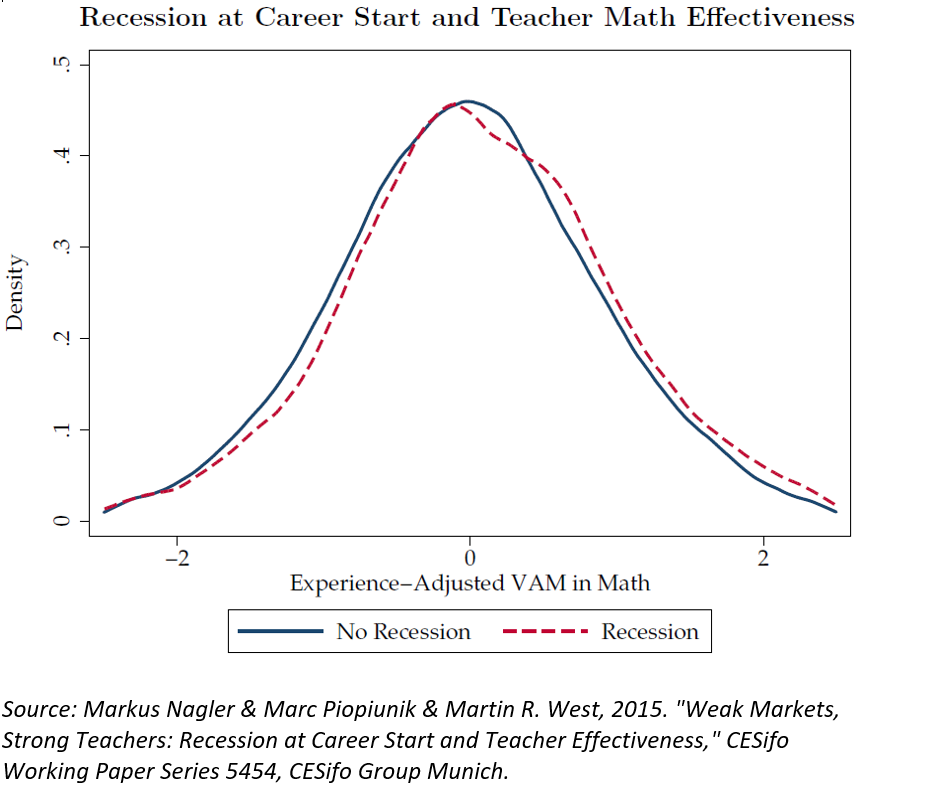It's safe to say that recessions are bad – people lose jobs, investments lose value, politicians lose elections. However, it turns out there's one group that benefits from an economic downturn: students.
That silver lining was uncovered by research looking at teachers' effectiveness from the lens of the year they were hired. It turns out that when job opportunities are limited, individuals who would normally seek out other professions turn to teaching instead. In other words, when the economic incentive to become a teacher increases, so does the quality of new teachers.
So how much better are recession-year teachers? German economists Markus Nagler and Marc Piopiunik with Martin West of the Harvard Graduate School of Education found a meaningful difference in effectiveness, the equivalent of about three weeks of additional student learning over their colleagues hired in non-recession years.
Two clear policy implications emerge from this study. For starters, school districts should view recessions as an opportunity to aggressively hire new teachers. Odds are that in doing so, districts will see a bump in both reading and math scores.
But it can't be that easy, right? Individuals who sought out teaching because of the economic benefits surely must leave the profession at higher rates once the economy improves. Turns out that's not the case. While not statistically significant, the study found that recession teachers are slightly less likely to leave the public school system than non-recession teachers.
The second policy implication here is quite simple: when teaching becomes a more attractive choice of job, no matter what the conditions, the quality of applicants improves. A recession creates this condition by diminishing the value of other opportunities, but this same effect could be replicated by increasing pay to boost the value of becoming a teacher. Since recessions are hard to predict and typically last only about a year and a half, this would appear to be a far more practical approach for districts and states to pursue.

